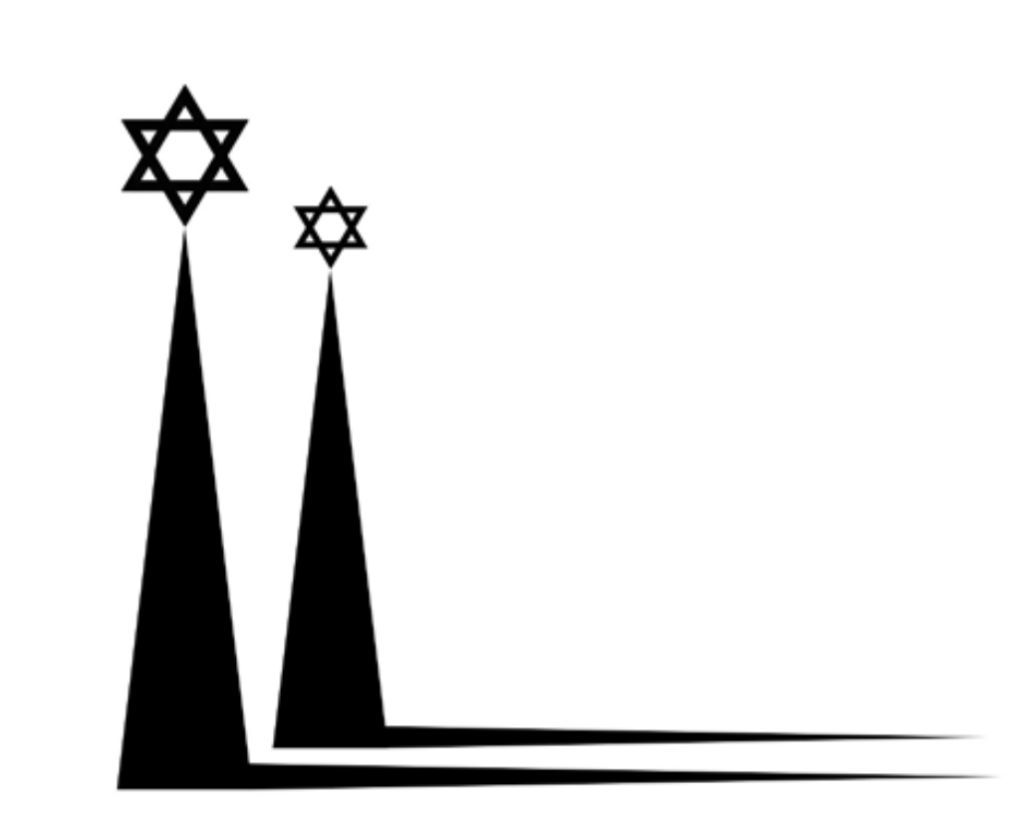The following is an excerpt from Fragments, the new magazine from Emor.
by Talia Lavin
It’s been a few years now that, walking around the world, I feel a sheen of sweat on my neck, a kind of acute, crawling knowledge about just how many people out there hate me because I’m a Jew. It feels like Juno’s thousand-eyed watchman looking at me, that pinprick of double consciousness; as I move about, I can feel that hatred pressing thickly against me like bad air, unpausing
I can hide my Jewishness, somewhat, if I like; I do not have to announce it, and it can stay implied by my face and voice. In the right light, perhaps, bulbous nose and curly hair aside, I can pass for a gentile white person — a privilege not afforded to Jews of Color — and move through the world unencumbered by prejudice. But the right inflection on my name, or even a candid acknowledgement of my background, entraps me in a tradition of hatred that preceded my birth by millennia. This is a publication about freedom, and in order to discuss freedom one must perforce understand unfreedom in its various manifestations; and there is a profound unfreedom that comes from being the object of hate, a surveillance that becomes self-surveillance, that smothers pride in the self and posts a guard at the door of the synagogue and the heart.

Since 2017, I’ve studied the right and far-right in this country, and by extension its networks extending around the world. The more I’ve looked into intersecting movements on the political fringe — from the anti-vaxx movement to apocalypse preppers, militia members, sovereign citizens, Flat Earthers, constitutional sheriffs, and the omnipresent neo-Nazis — the more I’ve come to see that the white-hot core of their commonality is an absolute commitment to antisemitism.
The hate is intense, of course — annihilatory in its desires, overwhelming in its scope. To glance over the elaborate, conspiratorial graphics traded around in white supremacist chats, purporting to explain the degraded state of the world by the presence of Jews in it; to take in the sheer volume of antisemitic slurs; to observe the harassment campaigns against individual Jews and Jewish communities is to be staggered, as by a blast of searing air. But while the intensity of the hate is educational in and of itself, what really forced me to pay attention was the realization that antisemitism plays a crucial role in the very structure of hate movements — a tentpole for the rest of their vile beliefs.
This is not to say that there is a quantitative difference in the way hate groups hate — for them a Black church and a queer event and a synagogue and a Walmart in El Paso with a mostly Latino clientele are equal-opportunity targets — but rather that antisemitism is sui generis in the role it serves, as a kind of infrastructure. The worldview is not so subtle or intellectual that it requires intimate exegesis but the thesis goes something like this:
The ideas about sex and gender we advocate for are self-evidently right and pure and true; why doesn’t the world agree? Something must be subverting natural law, and the Jew is right there orchestrating the subversion.
People of color lack the intelligence and drive to organize for their own rights, because they are genetically inferior; therefore, there must be a shadowy hand puppeteering their battle for equal treatment. And the Jew is right there in the middle with his fingers on the strings.
Every movement gains its foremost urgency by presenting the prospect of existential threat, which, for two centuries of white supremacists, has been a zero-sum and fear-filled attitude towards immigration and interracial unions. These are cross-national and interpersonal trends, complex to distill into their constituent parts, but easy to fit into the one overweening theory that someone is doing this to us, out of a great and unreasoning animosity towards white people. And the Jew is right there, omnipresent and omniscient, creating immigration policy, softening the cultural landscape towards miscegenation through media control, diluting the pure-white stock of their most potent enemies…
This sort of worldview is evident in the works of, for example, Henry Ford, whose International Jew is still eagerly traded in white supremacist chats; in the continued popularity of the Protocols of the Elders of Zion, a tired forgery that just keeps chugging along; it’s disgorged in densely packed memes whose theses inevitably boil down to Jewish world-control; it’s embodied in the Nazi-era caricature of a globe-strangling octopode that is the Jew, all slime, all smothering tentacles.
And so antisemitism serves an explanatory function that can accommodate all sorts of specialized fillips and curlicues but in essence says everything I don’t like about the modern world is a Jewish plot. Trans rights, feminism, voter advocacy, Black superheroes, the popularity of Szechuan food, refugee resettlement programs, gay marriage — Jewish plot, Jewish plot, Jewish plot. It’s tedious but it gets the job done. The advantage of positing a foe whose foremost racial trait is cunning is that everything can be explained as a conspiracy, whose proof is in its very hiddenness; and there is, of course, a moral boost in the notion that this foe has great and unnatural powers, more power than you will ever have, despite the fact that you outnumber them, that faces like yours are the faces of power.
The Jew as the shadow power behind a global order designed to subvert white morality and dilute white fertility is a remarkably durable notion, nebulous enough to be impossible to disprove and energizing enough to set the wheels of entire hate movements spinning. The essence of any cult is an offering of secret knowledge that separates the members from plebeians, and for the plurality of white-supremacist groups that secret knowledge is precisely what’s delineated above. (Incidentally, the very fact that white Jews are considered white is at the center of the ire: White supremacists gorge themselves on the notion that Jews purposefully infiltrated whiteness to destroy it from inside, traitors and parasites.) The Jewish Question, they call it, or the “JQ” for short, and getting “red pilled on the JQ” is what fundamentally distinguishes organized hate movements from the general racist noise of the American right. It is a simple but tenacious explanatory theory of the entire global order, with sinister intimations of greater and greater existential threat. This is the threatened dilution-into-extinction they call “white genocide,” and the meaning behind those 2017 chants of “Jews will not replace us” — will not replace whiteness, that is, with a rising tide of color.
Foregrounding the logic of hate groups qua hate groups — self-identifying neo-Nazis and their fellow travelers — is not to say that other forms of racist violence are insignificant. Indeed, the death tolls of such structural features as medical neglect and police violence are far higher; judicial and electoral systems are designed to imprison and silence people of color; racism permeates every facet of American life like a permanent impenetrable pall.

I have often found, however, that there is great use in examining the most open and extreme versions of genocidal ideologies: By understanding their logic and methods it is possible to see the echoes of those same principles in the common order of things. The shadow of hatred is everywhere; it brightens the noon, falls on our necks like a dark noose. And the unfreedom of living under that shadow belongs to us, yes, but it belongs also to all those groups — from queer kids to Asian immigrants to the unjustly incarcerated millions — who are entrapped in a system that uses us, Jews, as the central pillar of its logic. The thing I have understood most ardently out of all my time in the sewers of the worst minds, from all that bedecking myself in the foul crimson of their loathing, is that the struggle to be free from antisemitism is inextricable from the struggle against so many other forms of hate. It is not a dilution but a recognition of what antisemitism is and how it functions — as the armature of hate, its undergirding feature — that demands we dismantle the whole machine. This is how we get free of the hot eternal gaze of their loathing: by freeing all the others trapped with us in this ugly panopticon, until we all walk together on the free green earth.

Talia Lavin (she/her) is a journalist and author of the book Culture Warlords: My Journey into the Dark Web of White Supremacy (Hachette, 2020). She has been writing about the far-right in various forms since 2017, and has published work in New York Magazine, the New Yorker, the New York Times Book Review, the Nation, the New Republic and many more publications. She is currently at work on a second book about religious fundamentalism and right-wing grifts in the United States, in addition to a biweekly newsletter, The Sword and the Sandwich, which mixes political essays with culinary reviews. You can find her on Twitter at @swordsjew.
To order your issue of Fragments, click here.
